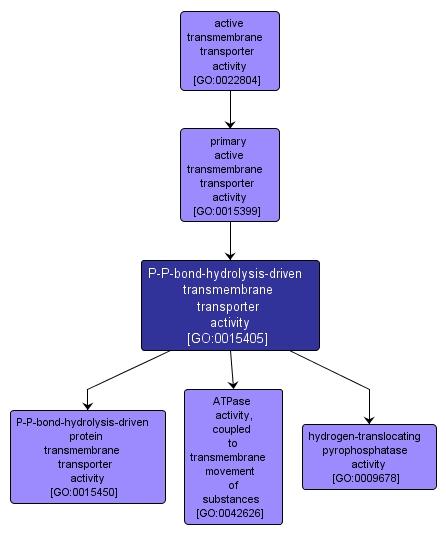| Desc: |
Primary active transport of a solute across a membrane, driven by the hydrolysis of the diphosphate bond of inorganic pyrophosphate, ATP, or another nucleoside triphosphate. The transport protein may or may not be transiently phosphorylated, but the substrate is not phosphorylated. Primary active transport is catalysis of the transport of a solute across a membrane, up the solute's concentration gradient, by binding the solute and undergoing a series of conformational changes. Transport works equally well in either direction and is driven by a primary energy source. |














